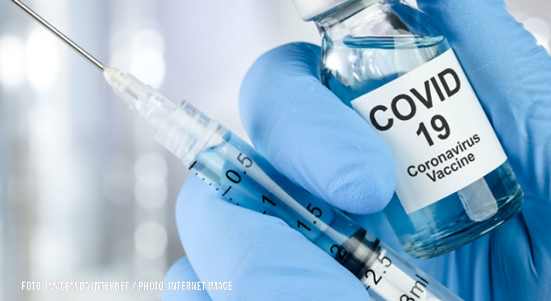
SARS-CoV-2: impact of booster vaccines on variants
Study evaluated the safety and immunogenicity of vaccines in SARS-CoV-2 variants
08/08/2022
Higher titers of Omicron BA.1 were observed with vaccines containing Omicron compared to the Prototype vaccine and titers against Omicron BA.4/BA.5 were lower than against BA.1 for all candidate vaccines
In a preprint study published in medRxiv titled “SARS-CoV-2 Variant Vaccine Boosters Trial: Preliminary Analyses”, researchers evaluated the immunogenicity and safety of vaccines against SARS-CoV-2 variants. In it, the team assessed the magnitude and breadth of early neutralizing antibody responses after a second booster vaccination with specific variant vaccines alone or in combination against Covid-19, taking into account the diverse immunological context of SARS-CoV-2 observed in the general public.
For this randomized and open-label phase II study, 597 vaccinated volunteers were enrolled between March 30 and May 6, 2022, with a mean age of 53 years, and 20% of them had already contracted the coronavirus. Participants were randomized to one of six Moderna mRNA vaccine arms (50µg dose): Prototype (mRNA-1273), Omicron BA.1+Beta (1 or 2 doses), Omicron BA.1+Delta, Omicron BA.1 monovalent, and Omicron BA.1+Prototype. Neutralizing antibody titers (ID50) were evaluated for variants D614G, Delta, Beta and Omicron BA.1 15 days after vaccination. In addition, on day 15, a subset of samples from non-coronavirus infected individuals in four arms was examined in a separate laboratory to neutralize antibody titers to subvariants D614G and Omicron BA.2.12.2, BA.1 and BA.4/BA.5.
The results of the study showed that in relation to the SARS-CoV-2 prototype vaccine, vaccines containing Omicron exhibited higher titers of Omicron BA.1. In addition, it showed that for all vaccine options, titers against Omicron BA.4/BA.5 were lower than in relation to BA.1. For this study, in this initial phase, only the Moderna vaccines were used. Later stages are evaluating vaccine candidates with Pfizer/BioNTech and GSK/Sanofi protein adjuvant.
Update of vaccines
Since the beginning of the Covid-19 pandemic in 2019 in China, vaccines have saved many lives by protecting people from symptomatic infections and serious complications. However, the efficacy of immunizers has greatly reduced with the emergence of SARS-CoV-2 variants (VOCs) worldwide, among the various identified concerns are Beta (B.1.351), Delta (B.1.617.2), Omicron BA.1 (B.1.1.529), Omicron BA.4/BA.5 and BA.2.12.1, all characterized by mutations in the receptor-binding domain of the spike (S) protein. These variants increase the chances of breakthrough infections, however, science still cannot say with conviction whether we will need vaccines against the variants every time a new one arises and, so far, scientists are still unable to anticipate the evolution of the coronavirus.
Recently, the Food and Drug Administration (FDA) recommended that manufacturers include Omicron BA.4/BA.5 along with the prototype in SARS-CoV-2 vaccine formulations from the fall of 2022 (Northern Hemisphere). The World Health Organization (WHO) has stated that the subvariant BA.5 from Omicron is expected to become the predominant version of the virus in the Americas within the next few weeks. The strain has already been detected in 22 countries in the region and has also spread throughout Europe and Asia. BA.5 is considered a more contagious and resistant subvariant to the vaccine and is a cause of concern, since despite the fact that the immunization rate in the world has slowly advanced, the numbers of cases and deaths have risen again.
“Our data are consistent with the FDA recommendation for a vaccine with a prototype component to broaden antigenic scenarios close to D614G in case of the emergence of new variants of concern in that part of the antigenic map, and an Omicron component to broaden the antigenic scenario close to Omicron BA.1 and BA.4/BA.5. Though, it is recognized that all strategies tested and reported here offer sub-optimal coverage in the antigenic space near Omicron BA.4/BA.5 but continue to increase the antigenic distance of D614G, optimizing the antigenic scenario close to BA.4/BA.5 that will be paramount for the effectiveness of the vaccine against Covid-19, says the article.










